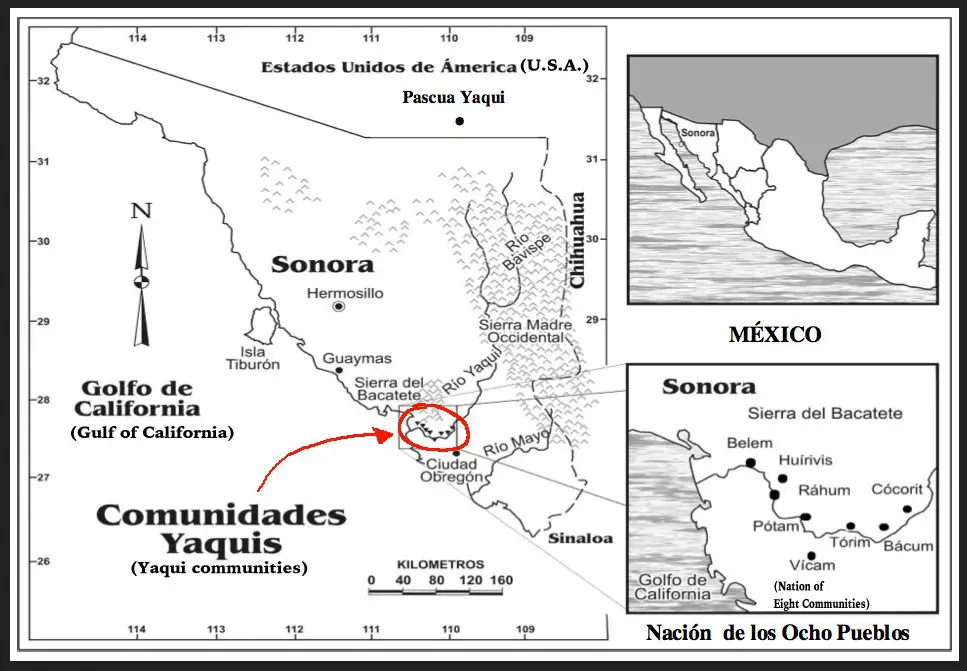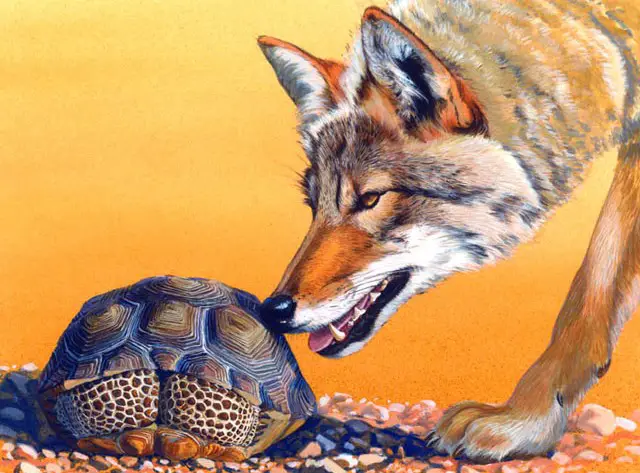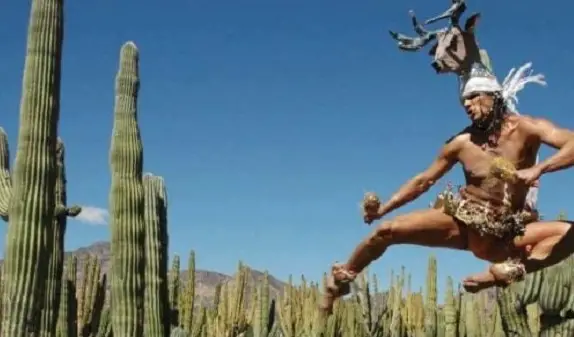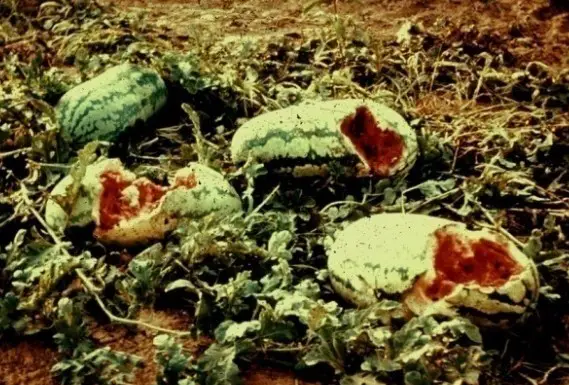 The Yaqui or Yoeme people have lived in the river valleys of south-central Sonora since time immemorial. The name “Yaqui” comes from the Yoeme word “Hiakim” which was the name these people gave to their homeland. The Yaqui resisted outside influence for hundreds of years and as a result much of their culture has survived into the 21st Century. Yaqui culture is full of many legends. Here are 4 involving animals.
The Yaqui or Yoeme people have lived in the river valleys of south-central Sonora since time immemorial. The name “Yaqui” comes from the Yoeme word “Hiakim” which was the name these people gave to their homeland. The Yaqui resisted outside influence for hundreds of years and as a result much of their culture has survived into the 21st Century. Yaqui culture is full of many legends. Here are 4 involving animals.
- Bobok, The Toad that Saved the World
Many thousands of years ago the Yaqui people were suffering through a terrible drought. The elders of the Yaqui towns had never experienced anything like it. Water holes dried up and so did old wells. People dug new wells but couldn’t find water. Crops shriveled up and died and the Yaqui were facing the prospect of starvation. The pueblos got together and came up with a plan: They would send a messenger to speak with the great spirit of the rains, a powerful entity named Yuku, wo lived in the clouds in a big adobe house. First, they ordered a sparrow to visit Yuku. The bird flew up through the sky to Yuku’s home and pleaded with the great spirit to bring the necessary rain to the scorched Yaqui lands. Without hesitation, Yuku agreed and sent rain to follow the sparrow’s path down to earth. The sparrow flew fast but was struck by lightning, so the rain stopped falling because it was following the bird and didn’t know where to go. The Yaquis looked up in the sky to search for the sparrow and the rain and saw neither. So, the leaders decided to send up another messenger to the rain spirit Yuku, this time a swallow. The procedure was the same: They released the swallow to fly high up in the sky to plead with the great rainmaker to send down rain so the earth would not suffer so much. Yuku was happy to oblige and once again sent a torrential rainstorm down from the heavens to follow the swallow to the proper destination. The poor swallow was not flying far enough ahead of the storm, so the messenger got caught up in the winds, was tossed about violently and died. The rain stopped because it didn’t know where to go. Again, the Yaquis were left high and dry. Which animal could they use to finish the task? Time was running out. The Yaqui chiefs decided to enlist the help of Bobok, a toad who lived in a nearly dried-out swamp called Bahkwam where the Yaqui pueblo of Bácum stands today. The toad went to the Yaqui council and agreed to visit the sky spirit, but only after a good night’s rest. He returned to his little home in Bahkwam, and on the way he visited a friend of his who was a reclusive magician. From the magician Bobok the Toad obtained bat wings that he would use the next day to fly high into the sky. When the morning came Bobok took off to complete his task. Once again Yuku the great rain spirit agreed to send rain to the Yaqui people, and because of the previous failures, the brave toad flew very carefully down to earth, dancing along the rainstorm, and singing, making sure not to get himself killed by the lightning or the violent winds. When he stopped croaking about halfway down, the rain also stopped, thinking Bobok had died. He resumed croaking so the rain would know he was still alive. Singing all the way down, Bobok the Toad made it safely to the Yaqui lands and so did the rain. It rained all over the earth and Bobok retired to his comfortable home at Bahkwam. Since that time the toads have multiplied and whenever they sing, the rain comes looking for the toads to bless the earth with water.
- The Turtle and the Coyote
 Many, many years ago, right after the earth was first created, a turtle was in the desert eating the fruit of the pitahaya cactus. His mouth was all red from the juice of this fruit. When he was finished eating and fully satisfied, a scrawny coyote went up to him. It was clear that the coyoted hadn’t eaten in days. Back in those times, animals could talk and the coyote then spoke to the turtle:
Many, many years ago, right after the earth was first created, a turtle was in the desert eating the fruit of the pitahaya cactus. His mouth was all red from the juice of this fruit. When he was finished eating and fully satisfied, a scrawny coyote went up to him. It was clear that the coyoted hadn’t eaten in days. Back in those times, animals could talk and the coyote then spoke to the turtle:
“Hey, I’m hungry. What is it that you just finished eating?”
“I just ate a man,” the turtle said calmly. The turtle lied in hopes that the coyote would not eat him.
The coyote looked around for any scraps of a man that he could eat, but when he couldn’t see any, he asked the turtle, “Do you know of anywhere where I can find some food?”
“Yes,” the turtle said, “There is a ranch nearby and the people who live there always feed me. I can share my food with you. Follow me and let’s go now.”
Of course, the turtle was very slow, and it was very warm outside. They spent most of the day walking through the blazing hot desert.
“When are we getting to the ranch?” The coyote said. “We’ve been walking for quite some time. Can’t you walk faster?”
The turtle then told the coyote that he couldn’t walk faster because if he did, his feet would burst into flames. They slowly made their way across a treeless, sandy plain and the coyote started slowing down, until he fell faint. The coyote slowly died of thirst and hunger while the turtle kept walking. There never was a ranch and no one was waiting with food. The turtle had tricked the coyote just so he wouldn’t get eaten himself.
- The Magical Buzzard and Malon Yeka
Outside the pueblo of Bácum there once lived a man named Malon Yeka. He was very different from the other Yaquis and lived a life of cheerful solitude, always dreaming and thinking up new things. He didn’t work much and always wanted things to come to him by way of miracles and through wishing. Malon Yeka would spend a lot of time daydreaming. At one point, he wanted to make tunnels and burrow into the ground like a prairie dog and discover the secrets of the world underneath the earth’s surface. Yet another time he had wished to be a bird, so he could soar above everything and see for miles. One day, he sat on a small bench under a cottonwood tree and began daydreaming of flight. A buzzard flew down off the cottonwood tree and disturbed Malon Yeka’s reverie. In those days, animals could talk, so the buzzard started speaking to the man:
“What are you thinking about right now?” the buzzard asked.
 “I was thinking about how nice it would be to be a buzzard like you,” Malon Yeka confessed. “Then I could fly high and see everything.”
“I was thinking about how nice it would be to be a buzzard like you,” Malon Yeka confessed. “Then I could fly high and see everything.”
“I can grant you your wish,” the buzzard declared. “I can be a man, and you can be a buzzard. Let’s try this for 6 days and then I can make things back to normal. I warn you, though, my life is not easy.”
Then the bird detached his wings, plucked some of his feathers and handed them to the man. The man followed suit and gave the buzzard his clothes. The buzzard headed to the town of Bácum and the man stretched out his wings and made it to the treetops.
Even though he had a strange walk, the people of the Yaqui village welcomed and fed the strange-looking man who had wandered into their village. The buzzard-as-a-man ate well, although the people tended to avoid him because he smelled like dead animals.
Meanwhile Malon Yeka had not been having much success as a buzzard. He found himself hopping from treetop to treetop trying to find dead animals to eat. He was weak and very hungry, but he somehow made it to a small ranch where he landed near a little girl. The little girl took pity on him and wanted to give him food, but her father called her back into the house and Malon Yeka – as a buzzard – went another day without eating. He hopped away because he was now too weak to fly.
At the end of the six days the real buzzard made good on his promise and went looking for Malon Yeka to switch back with him. Malon Yeka was so weak from not eating he was almost dead. They made the switch and then the buzzard asked the man what he thought about the reality of living as a scavenger bird.
Malon Yeka told him how hard it was and then ran back to be with his people. He would never daydream again.
- The Wax Monkey and the Coyote
Near the banks of the Rio Yaqui there once lived a farmer who grew magnificent watermelons. Near harvest time the farmer would always go out to his fields and encounter half-eaten melons or notice that some were missing. He had a solution: He would sculpt an evil-looking monkey out of wax to stand as a guardian over his watermelon fields, much like a modern-day scarecrow. The farmer made a beautiful, life-like monkey out of wax, and said a small prayer before placing it in his fields. He went to sleep that night reassured that no more watermelons would be eaten or rustled by thieves.
 During the night a hungry coyote wandered into the field wanting to eat one of the plump, ripe watermelons. The coyote saw the monkey presiding over the watermelon patch but was not scared off by this wax sculpture which was so lifelike that he thought it was a real monkey. The coyote went up to the monkey and said, “Hey monkey! Go away so I can eat one of these watermelons in peace. Let me be so I can eat in peace.” When the monkey didn’t answer, the coyote continued, “If you don’t leave, I will beat you!” The monkey just sat there, a silent sentinel keeping watch over the farmer’s watermelon patch.
During the night a hungry coyote wandered into the field wanting to eat one of the plump, ripe watermelons. The coyote saw the monkey presiding over the watermelon patch but was not scared off by this wax sculpture which was so lifelike that he thought it was a real monkey. The coyote went up to the monkey and said, “Hey monkey! Go away so I can eat one of these watermelons in peace. Let me be so I can eat in peace.” When the monkey didn’t answer, the coyote continued, “If you don’t leave, I will beat you!” The monkey just sat there, a silent sentinel keeping watch over the farmer’s watermelon patch.
The coyote made good on his promise and then smacked the monkey with his paw. The coyote’s paw stuck to the monkey, and he couldn’t move it. The coyote then tried to kick the monkey and the same thing happened: his foot got stuck in the wax. Another smack of the paw and another kick had the same results. Finally, the coyote tried to use his tail to slap the money in the face, and then his tail got stuck. In the morning, the farmer went out to his fields and found the coyote stuck to the monkey. The man got a jug of hot water and threw it on the coyote, thus melting most of the wax monkey and burning off the coyote’s fur. The coyote ran away naked and died, and then the buzzards ate him. Despite all this fuss, to this day coyotes still love to eat watermelons and there is nothing that humans can do to stop their taste for this wonderful fruit.
REFERENCES
Warner Giddings, Ruth. Yaqui Myths and Legends. Self-published in 1959. Accessed at forgottonbooks.com.
